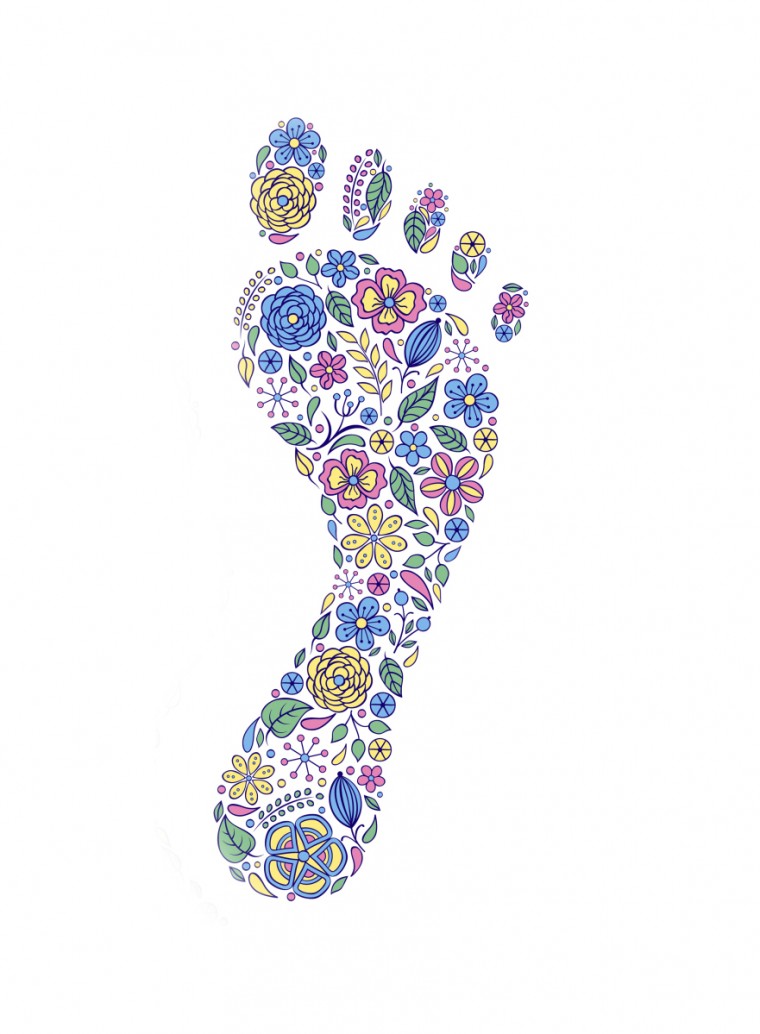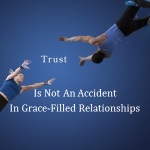Here’s a riddle for you? What do carbon emissions and marriage have in common?

The answer…they both leave a footprint, one that will outlast your years here on earth. In a real sense, footprints are what each of us leaves behind when we move on. Whether positive or negative it is our legacy, an indelible reminder that we were there.
Scientists increasingly admonish us to be more considerate of the impact that our individual behaviors (e.g., electricity usage, transportation emissions, and waste management) have on the health of our planet. Though I admittedly feel as if some of their worries are overblown, there is no question that we humans have to become more responsible for our carbon footprint–our impact on the earth for future generations.The premise of course is that our responsibility is to leave as small a carbon footprint as possible in order to preserve our earthly home for future generations.
However, as I listened to one of these environmental debates, I began to think about the imprint that we leave in other domains as well–particularly in relational areas.
I wonder what is my relational footprint? In other words, what impact are my marriage, parenting, and friendships having on people that I know as well as those whom I will never meet now or in the future. Contrary to the interest in minimizing one’s carbon footprint, the objective is to leave as large a relational footprint as possible in order to positively influence individuals and communities for future generations.
Unfortunately, too many people leave a small relational footprint because they think selfishly about getting their own financial, emotional, and sexual needs satisfied. We tend to think more about what we can get rather than what we leave behind for others.
The impact of our short-sighted relationships dominate the news. Popular culture increasingly challenges the relevance of marriage. Divorce rates remain intransigent. Child poverty and economic impoverishment more generally continue to plague inner cities. Education systems, particularly urban ones, often graduate only half of its students. Trans-generational epidemics of teenage pregnancy and father absenteeism continue to mar the national landscape.
I believe there are forces intent on minimizing your relational footprint and thus interrupting the impact of your legacy. As we watch the parade of individuals whose legacy and life work has been tarnished by narcissism, dishonesty, complacency, infidelity and illicit behaviors, we get a glimpse of how so many people’s relational footprint has been damaged or diminished.
Our culture is in dire need of role models committed to leaving relational footprints that point us in the right direction—a path of authenticity and truthfulness.
I would like to suggest five steps to maximize your relational footprint and fulfill the purpose for which you exist. These steps are effective because they shift the focus away from exclusively you to a broader concern for those around you.
Five Steps for Maximum Relational Impact
Step 1: Assume a redemptive posture
Humans have flaws. Nobody is perfect. That includes you. Most of the time it is much easier to see other’s flaws rather than our own. So often, we want others to get exactly what they deserve. But, when it comes to us personally, we feel we deserve a break. The reality is that we all need to have grace and mercy extended to us. We need favor.
As you are able to extend this favor to others you serve a redemptive role in their lives–covering their faults. This type of behavior fosters an atmosphere of trust which is foundational for relationship building to flourish.
Step 2: Give others the best of yourself
Many relationships fail to thrive because one or both parties fail to fully engage. While we often show our best self in the “honeymoon” phase of relationships, familiarity relaxes our effort.
We commonly see this dynamic in marriage relationships. During the dating phase, each party is out to strut his/her best stuff in an effort to win the heart of the other. But, once the nuptials are complete, attitudes and behaviors often regress. Each person is left feeling duped or shortchanged.
Maximizing our relational footprint means that we commit ourselves to giving our best effort to our relationships. Sometimes, we may fall short. But, we constantly desire to show others how much they matter to us by giving them the best of ourselves.
Step 3: Maintain healthy boundaries
All healthy relationships have effective boundaries that allow each party to understand his/her individual identity. Healthy boundaries allows you to own your feelings, your attitudes, and your needs. Healthy boundaries allow you to respect and be sensitive to the boundaries of others as well.
No one can effectively influence others without a solid understanding of who he/she is. You must know where you end and where the other person begins. This knowledge minimizes codependent behavior. It minimizes overstepping your authority.
Ultimately maintaining healthy boundaries is vital to your relational footprint because it communicates to the other party that you value who he or she is as an individual.
Step 4: Adopt a positive narrative
Your words have power in your relationships. How do you communicate about them? What do you say to your spouse, children, friends, and coworkers?
In elementary school we say that “sticks and stones may break my bones but words will never hurt me”. Baloney.
Words can hurt in the short-term and they can wounds people for a lifetime.
Most of us like to be around people who make us feel good. When you work to maintain a positive narrative about your relationships and circumstances you endear people to you. Your positivity is infectious. People want to be around you.
I am not suggesting that you can never express negative feelings. But, when you exude an aura of positivity, your confidantes will understand those times when you need to vent a little.
Adopting a positive narrative is important to expanding your relational footprint because it sets an atmosphere where feelings can be authentically communicated allowing relationships to deepen.
Step 5: Demonstrate a spiritual sensitivity
In a time when so many individuals are in search of “truth”, your spiritual sensitivity is a guidepost for them and for you. For those of us in a Christian tradition, we look to Christ for that stable source of light. We lean in to His Words for inspiration and direction in dark places. Those of other faiths have similar predilections.
Our spiritual foundation gives us grounded when the storms of life toss challenges our way. Our proverbial compass always points north–towards God.
It is this sensitivity that allows us to listen earnestly for the heart of those around us. While most people can be easily distracted by the words or the behaviors one demonstrates, the spiritual sensitive individual seeks to understand and respond to the heart of others.
Demonstrating a spiritual sensitivity enlarges your relational footprint because it allows you to guide the experience and needs of the individual to the truth and sustenance of God.
These five steps for maximal relational impact are effective because they are altruistic–focused on touching the lives of others.
It is not easy. Those desiring to maximize the relational footprint must remain vigilant and prayerful about what King Solomon calls the “little foxes that destroy the vineyard” so that God’s perfect will in us can be achieved. It is only with a spirit of contrition, humility, and grace that we are able to help others reach their own optimal footprint.
My profound desire is to embrace these five steps to encourage generations of families to love God and encourage one another.
What do you desire your relational footprint to ultimately be? Leave a comment below and let me know. I can’t wait to hear your thoughts.




![LYH16: How to Communicate Everything Better [Podcast]](https://haroldarnold.com/wp-content/uploads/2014/07/value-150x150.jpeg)


